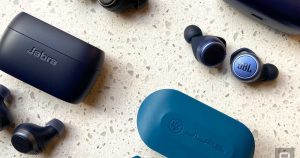In late September, marathoners competing at the IAAF World Championships will be running in the dark. That’s because the Championships are taking place in Doha, where the average daytime temperature in September hovers just over 100 degrees Fahrenheit. It’s so hot that for the first time ever, the marathon is scheduled to start at midnight to reduce the risk of heat stroke.
Andrew Epperson, one of three men representing the US at the marathon, grew up in Houston and is used to miserably hot and humid summers. But he knows Doha might not be the place where he beats his personal best of just over 2 hours and 13 minutes. When it’s that hot, he says, “you have to throw time out the door.”
Scheduling a long-distance running competition in a desert so scorching that it necessitates midnight events may seem ridiculous and easily avoidable. But as climate change continues to cause warmer temperatures globally, this problem is no longer a poor logistical choice or even an anomaly: it’s increasingly the norm. The Women’s World Cup saw triple-digit weather in typically temperate France. The 2020 Summer Olympics in Tokyo are predicted to be the hottest on record.
Burning calories produces heat that drives up a person’s core temperature. Sweating is how the body releases that heat, and its evaporation creates a cooling effect. So the harder an athlete exercises, the more heat needs to find its way out, and the more dehydrated he or she becomes. In Tokyo, where the summer is both hot and very humid, cooling down will be even harder for athletes because the water-laden air won’t absorb sweat as quickly. No evaporation, no cooling off.
Fast times can certainly happen in hot conditions. (Just ask Eliud Kipchoge, who ran a blistering 2:04:17 at the London marathon in 2018, despite record-breaking temperatures.) But heat can present a real danger to athletes. Shalane Flanagan, a top US marathoner, collapsed after competing in the 2016 Olympic trials in Los Angeles, the hottest Olympic trials on record. Epperson also competed in LA in 2016. He describes the scene at the finish as “apocalyptic,” with medics rushing to cool down and rehydrate collapsed runners. A quarter of the female runners in the trials—and nearly one-third of the men—never finished the race.
Epperson did finish. He remembers staggering into his hotel room to sit in a cold shower. He was on the brink of heat exhaustion; others were even closer to heat stroke, which breaks down the body from the inside out. As your core temperature climbs, your body starts to shut down. At around 104 degrees, you get into the danger zone. If your temperature keeps rising, your central nervous system starts to malfunction, so you might become combative or confused. You might have seizures or start vomiting. Then your cells start to die. You can have kidney and liver failure. Toxins pour into your bloodstream. People who don’t cool down within 30 minutes could need organ transplants or have long-lasting muscular and neurological problems.
Even in the 85-ish degrees F of pre-dawn Doha, the risk of heat stroke is high.
Epperson, who lives and trains in Fort Collins, Colorado, is getting his body acclimatized to higher heat by slowly ratcheting up the temperature in which he trains. He does his hardest training in the early morning, when it’s still cool. On his longer, recovery runs, he tries to mimic the conditions he’ll see in Doha by running during the hottest part of the day, around three in the afternoon.
Some athletes who can’t get hot enough temps outdoors create their own heat rooms by setting up a few space heaters next to a treadmill and cranking them up to 90 degrees. Some will even place a UV light overhead to simulate the sun. But athletes have to strike a careful balance. “You don’t want to drain yourself by training in too harsh of conditions,” says Courtney Frerichs, who is competing in the steeplechase at the World Championships, a 3,000 meter race in which runners must leap over barriers and into large puddles of water.
Frerichs raced in Doha two years ago, in a different event, and encountered a frustrating problem: it was too hot to train outside. She and her teammates ended up practicing on treadmills in an air-conditioned gym or running at night to avoid the worst of the heat. This year, she and the other athletes who will race on the track will benefit from a new, air-conditioned stadium. Marathoners, who will run along Doha’s waterfront outside the stadium, won’t get that luxury. Before competing many athletes will wear ice vests and wrap cold towels around their wrists and neck to bring down their core temperatures.
Danny Mackey, who coaches the Brooks running team, is preparing his runners for Qatar by having them sit in a sauna for 20 minutes after they finish their runs and before they start lifting weights in the gym. “Coaching becomes not just how many miles they’re running or what weightlifting routines they’re doing,” he says. “The conditions are critical.” Because his team trains in typically cool Seattle, Mackey urges runners to wear extra clothing during their workouts, and as the event nears they will move to hotter training locations.
Of course, elite athletes aren’t the only ones affected by heat. Construction and agricultural workers, who spend a lot of time laboring outside, are vulnerable, as are members of the military. Since 2008, at least 17 service members have died from heat exposure during training. Heat stroke is also the third-leading cause of death among high school athletes. What researchers want is a better way to predict who’s at risk, well before a heat stroke strikes. “There are two holy grail items,” says Doug Casa, head of the Korey Stringer Institute at the Unversity of Connecticut, which studies heat’s effect on athletes. “Real-time assessment of core body temperature and hydration.”
But unlike measuring heart rate or step count, there is no wearable device that can gather that data. To get an accurate core temperature reading, Casa says that, essentially, “we need something at the organ level.”
Right now that means using some impractical and unpleasant techniques. A rectal thermometer, for example, gives an accurate core temperature but isn’t welcome during a military operation or a marathon. Some researchers use a swallowable thermometer the size of a multivitamin that can report the temperature around your intestines. But at roughly $50 a pop, they’re too expensive to use regularly.
Mark Buller, a computational physiologist at the United States Army Research Institute of Environmental Medicine, notes that internal readings aren’t fool-proof either. “It’s not necessarily the hottest person who will succumb to a heat injury,” he says. He’s working on an algorithm that can extrapolate core temperature from heart rate and skin temperature, and he’s looking to isolate other predictive factors, such as aspects of a person’s gait.
Hydration plays into the equation too because when we sweat, we lose body mass. “For every additional one percent body mass loss, you’re about half a degree Fahrenheit hotter,” Casa explains.
Even with all the preparations by the facility and by athletes, the teams preparing for Doha still face risks. Athletes compete hard and will often ignore warning signs like dizziness or nausea to finish a race. “The most heat acclimatized, hydrated person in the world can still get too hot if they go too hard and it’s hot enough outside,” says Casa.
Perversely, Epperson says the marathon is already so extreme that dealing with heat feels like less of an issue. “It’s a little easier when you’re training for a marathon,” he says. “Because at a certain point in the race, if you’re not hurting, you’re probably not running the marathon correctly.”.
More Great WIRED Stories
-
You are already having sex with robots
-
The ethics of hiding your data from the machines
-
Smaller cities are trying to plug America’s brain drain
-
Why the NFL’s field goal record is waiting to be smashed
-
👁 Facial recognition is suddenly everywhere. Should you worry? Plus, read the latest news on artificial intelligence
-
📱 Torn between the latest phones? Never fear—check out our iPhone buying guide and favorite Android phones



